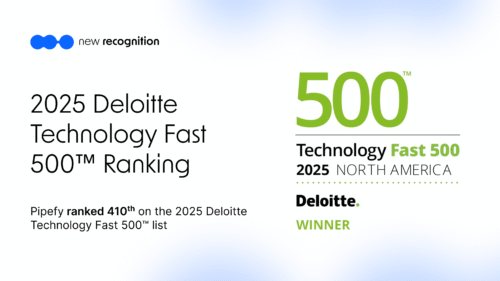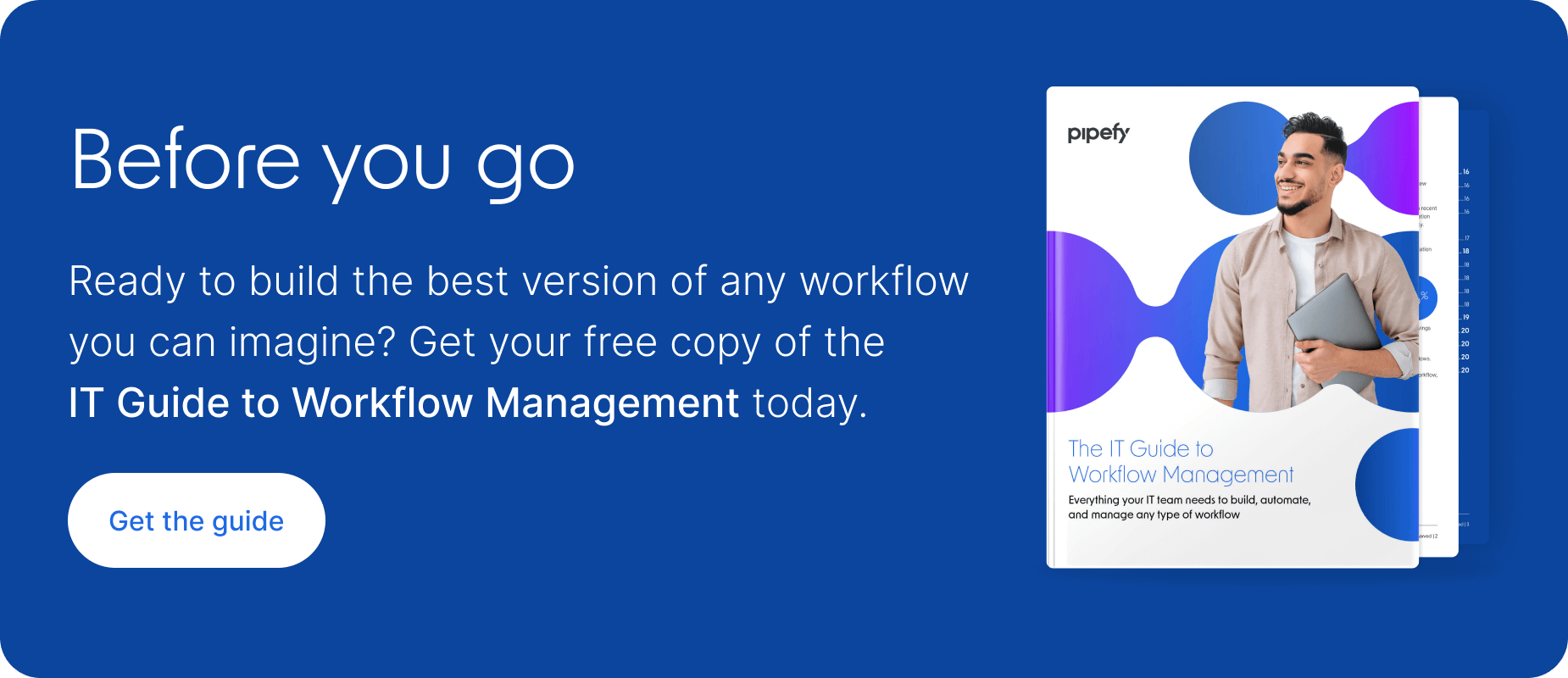ARTICLE SUMMARY
Learn how Pipefy’s AI governance framework mitigates risks, reinforces security, and guides the responsible use of Artificial Intelligence across business operations.

Artificial Intelligence (AI) is becoming more embedded in business operations across every industry. As adoption accelerates, companies face growing exposure to ethical, regulatory, and operational risks. Without clear standards, AI-driven models may produce inaccurate, biased, or opaque outputs, often relying on sensitive information entered by users.
In response to this landscape, Pipefy has built a complete AI governance program aligned with the European Union’s AI Act and ISO 42001 guidelines. In this article, you’ll find the main categories of risks, the practices gaining relevance, and how Pipefy addresses them within its platform.
Why AI Governance Has Become a Strategic Priority
The introduction of the AI Act in Europe and the growing adoption of frameworks like ISO 42001 have elevated AI governance to the agendas of boards, risk committees, and internal audit teams. These standards emphasize the need to categorize risks, implement proportional controls, and establish ongoing oversight structures.
Recent Deloitte reports show that boards already treat AI as a recurring supervision topic with a focus on risks and governance. Yet many organizations still build their controls in a fragmented way, which allows isolated decisions misaligned with compliance expectations.
This directly affects companies using AI in critical workflows such as credit decisions, supplier onboarding, fraud prevention, or customer-service monitoring. In these contexts, regulatory exposure and reputational risk go hand in hand. Without clear policies, auditable logs, and transparent decision trails, organizations struggle to answer questions from auditors, regulators, and even the press.
Platforms designed around responsible AI reduce this asymmetry. In Pipefy’s case, instead of treating AI risk solely at the policy level, best practices are built directly into the architecture and behavior of tools and features. This includes human-in-the-loop mechanisms, transparency, and full traceability.

Main Risks of AI for People and Companies
AI can significantly increase productivity, but when applied without structure, it may also create substantial harm. The key risks include:
Risks to Individuals
Models can influence decisions that affect a person’s life, integrity, health, and access to opportunities. Inaccurate or biased outputs can undermine autonomy, reinforce inequalities, and lead to unfair treatment in all kinds of processes, such as credit analysis, candidate screening, or service-request prioritization.
Privacy and Data Protection
Prompts containing sensitive data, weak access controls, or the misuse of personal information can lead to legal violations, and reputational and trust damage.
Socioeconomic and Financial Risks
Errors in automated decisions may cause financial losses, improper approvals, fraud, or disruption in regulated environments.
Lack of Transparency
Opaque decision-making erodes trust and makes disputes harder to resolve. Users lack clarity on when AI contributed to an action and which criteria were applied.
Environmental Impacts
Excessive or unoptimized model execution increases energy consumption and carbon footprint, an issue increasingly monitored by regulators and investors.
All these risks underscore the need for robust security, compliance, and oversight guidelines governing AI usage.
Read more: How to Prevent AI Hallucinations in Critical Contexts
How Pipefy Ensures AI Governance Inside the Platform
Pipefy’s AI governance program follows principles established by the EU AI Act and ISO standards for responsible AI systems. These principles have been translated into operational mechanisms embedded throughout the platform.
Key elements include:
1. Structured Human Oversight
Mandatory checkpoints in sensitive workflows, defined exception routes, and kill-switch mechanisms when intervention is required. Critical decisions are encouraged to follow standardized manual review steps.
2. Response Quality and Reliability
To reduce hallucination risk, users are advised to validate outputs, rely on official documents and business rules, and apply prompt guidance tailored to regulated contexts. Regular scenario testing ensures consistency and safety.
3. Privacy and Data Security
Sensitive data should not be included in prompts. Pipefy enforces encryption, environment segregation, least-privilege access, and strict controls preventing customer data from being used to retrain third-party models.
4. Transparency and Traceability
Detailed logs, justification records, audit trails, and clear indicators showing when AI is acting within a workflow.
5. Bias Mitigation and Fair Treatment
Guidelines to reduce indirect discrimination, scenario testing to detect bias, and prioritization of objective criteria before automation.
6. Sustainability and Operational Efficiency
Recommendations to avoid unnecessary runs, optimize interactions, and choose environmentally responsible models.

Recommended Best Practices for Safe AI Use in Pipefy
| Category | Recommended Best Practices | How Pipefy Applies These Guidelines |
| Human oversight | Human review for high-impact decisions | Built-in checkpoints |
| Data validation | Extra validation for sensitive documents | Custom rules inside workflows |
| Periodic testing | Scenario tests to detect biases | Regular agent reviews |
| Transparency | Notify users affected by automated decisions | On-screen AI indicators |
| Data protection | Avoid sensitive data in prompts | Alerts and controlled fields |
| Reversibility | Clear rollback paths and log review | Full history and audit trails |
| Multidisciplinary collaboration | IT, legal, and compliance involved in design | Joint reviews before activation |
| Use cases | Apply AI with clear criteria and human review | Credit and HR processes include final manual approval |
These practices create a secure and auditable environment for companies of all sizes to build AI-powered automations using AI Agents and AI Assistants, balancing efficiency with responsibility.
Read more: Implementing ‘Human In The Loop’ in Critical Automations
Pipefy as an AI Enabler for Safe and Responsible AI Adoption
Pipefy brings together low-code/no-code automation, AI capabilities, and a strong governance layer to support organizations that want to scale operations safely.
The platform serves as a true AI Enabler, giving business teams autonomy to configure AI Agents, AI Assistants, and analytics features while maintaining security, privacy, and compliance controls.
To explore Pipefy’s AI governance and security practices in depth and learn how your company can adopt AI responsibly within the platform, click the button below:










